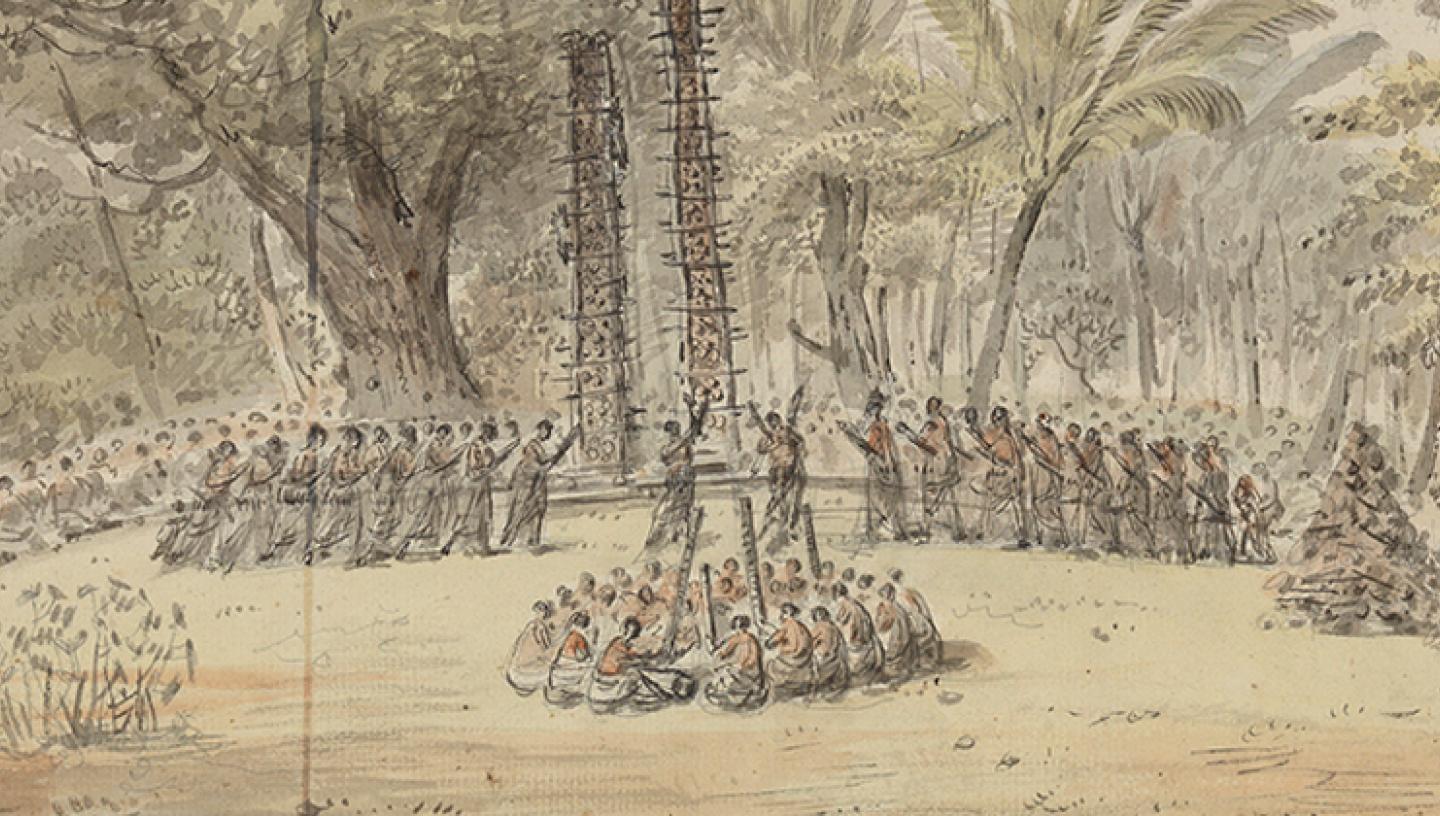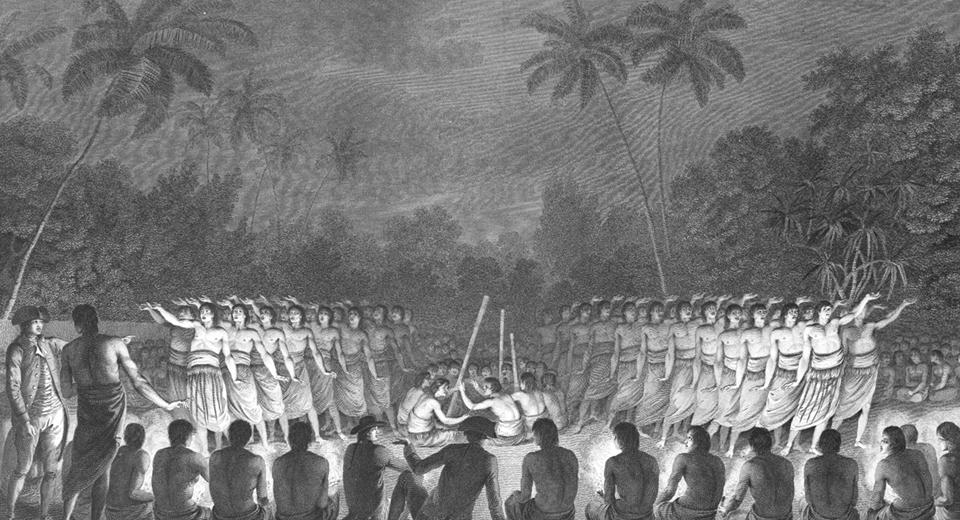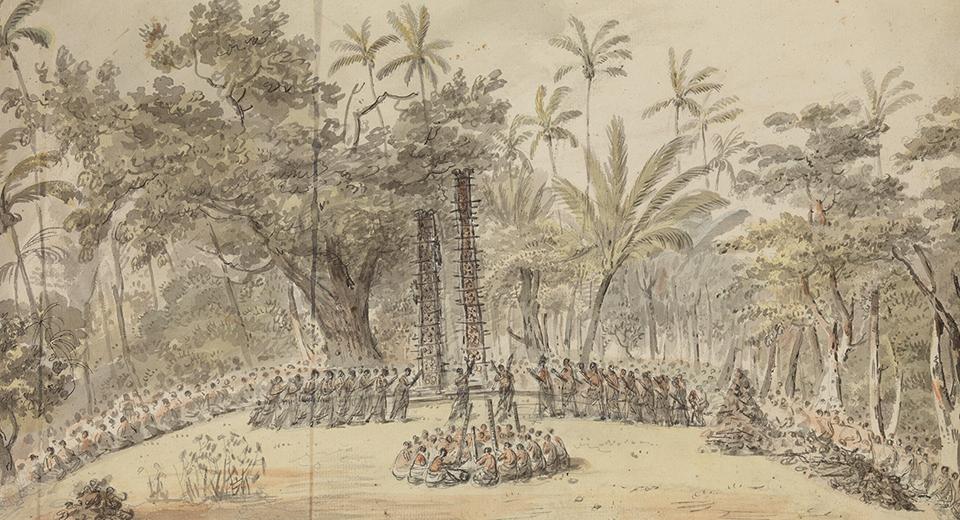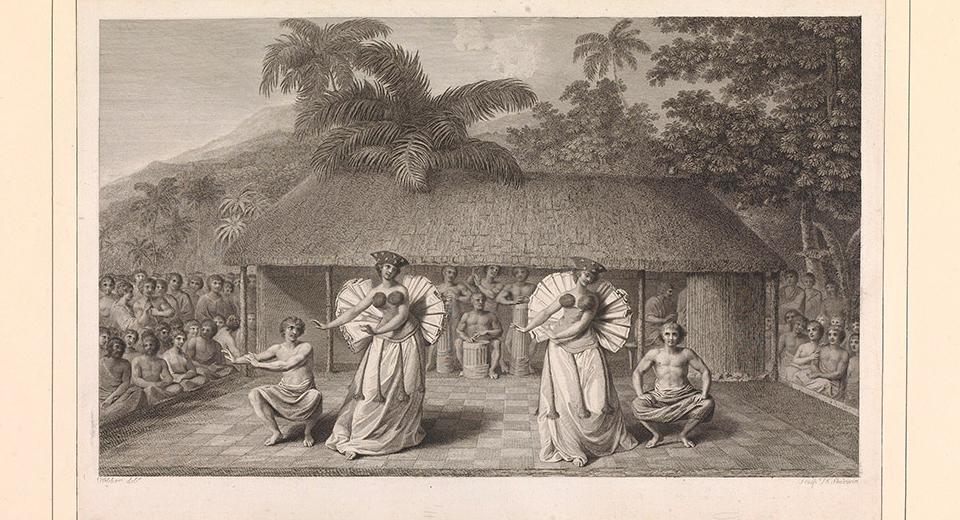
19 Apr 2016
Library Assistant Sonia Bacca looks at some fascinating Tongan dances, seen through our archives
April’s Item of the Month is on the work edited by John Martin and entitled An account of the natives of the Tonga Islands in the South Pacific Ocean: with an original grammar and vocabulary of their language (RMG Item ID: PBD4421).
The volumes recount the adventurous journey of William Charles Mariner who, aged thirteen, joined Port-au-Prince, a privateer and whaler due to sail to the Pacific Ocean. After a perilous voyage, the vessel reached the Tonga (or Friendly) Islands where it received a hostile welcome by the islands’ inhabitants; in fact many crew members were killed. Young Mariner, however, was spared and taken under the protection of the Islands’ ruler. He ended up staying on the island of Vava'u for four years.
The account of Mariner’s fascinating life in Tonga is complemented with a meticulous depiction of the customs of Tonga’s population, including domestic habits and pastimes, religious rites and medical skills. A section of the book is also dedicated to the grammar and vocabulary of the remarkably interesting Tongan language.
My attention, however, was captured by the mesmeric description of Tongan’s public festivals, more specifically the powerful performances which were their dominant components.
In recounting Tongan dances, such as mëé low folla – ‘a night dance with the arms outspread’ - and mëé too bu’ggi – ‘a day dance performed with paddles’ - John Martin essentially cites George William Anderson, the author of the historical account of Captain Cook’s first, second, third and last voyages – see below.
Particularly remarkable is the account of mëé too bu’ggi dance which is performed by almost hundred men
‘holding in their hands a little thin, light, wooden instrument above two feet long […] in a shape of oblong paddle […] called pagge [with which] they make a great many different motions […] all which were accompanied by corresponding attitude of the body.’ [Vol. II - p. 304]

In addition, Martin describes two other dances of distinctive significance: the héa and the oóla. Both dances are among the most ancient Tongan dances and are practised mainly at night. A particular emphasis is put on the héa, a dance of great complexity performed only by Tongan leaders. The rhythm of the music is very rapid; the ability of the dancers rests in their capacity to keep the time and, at the same time, perform their evolutions with grace and elegance.

What is striking about Tongan dances is not only the fact that they combine powerful evolutions with graceful movements; it is also the fact that performances have a symbolic connotation. In the case of the héa, for instance, dancers are expected to express the noble and imposing character of the dance, an indication of their superior role as leaders.
Female dances are also part of Tongan festivals. Martin, citing Anderson, describes a female performance where twenty dancers, wearing garlands of crimson flowers on their heads, execute
‘very graceful motions of their hands towards their faces and in other directions […] making constantly a step forward, and then back again with one foot, while the other was fixed’ [Vol. II, p. 297].
Like male dances, female performances were expected to be expression of wonderful vigour and dexterity as well as of graceful elegance and beauty.

If you would like to know more about Tongan dances, the following items can be viewed in the Caird Library Reading Room.
• Mariner, William. (1818). An account of the natives of the Tonga Islands in the South Pacific Ocean: with an original grammar and vocabulary of their language. London: John Murray.
• Anderson, George William. [1784]. A new, authentic, and complete collection of voyages round the world, undertaken and performed by royal authority: containing a new. authentic, entertaining, instructive, full, and complete historical account of Captain Cook's first, second, third and last voyages. London: Alex Hogg.
Find out how to register for a free reader’s ticket to visit the library.
Gooa lillé, fucca fetai (very well, thank!)